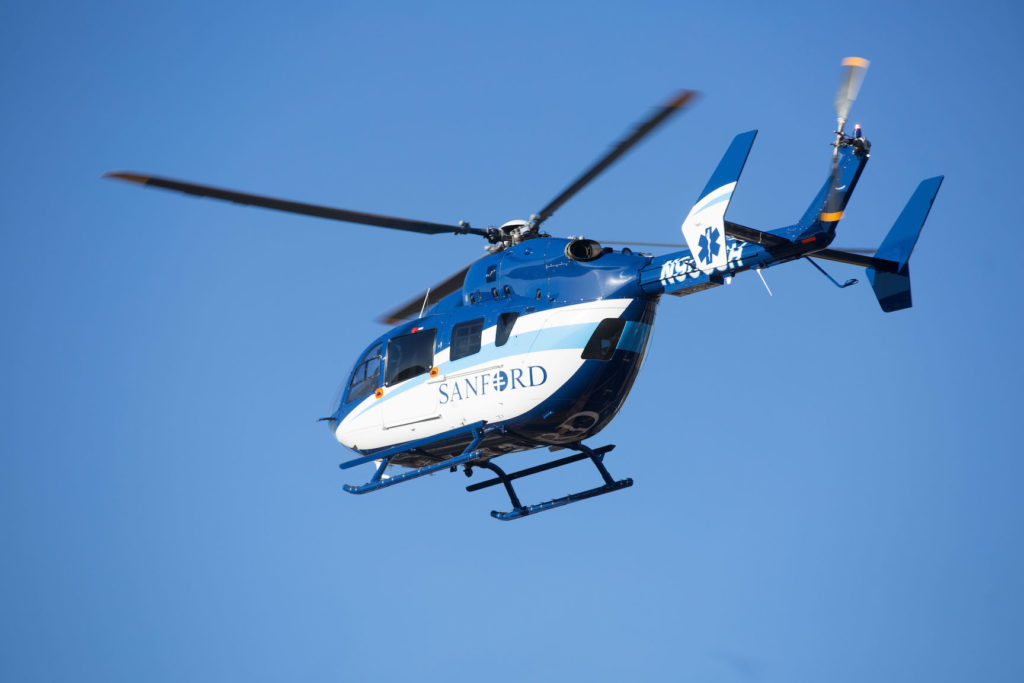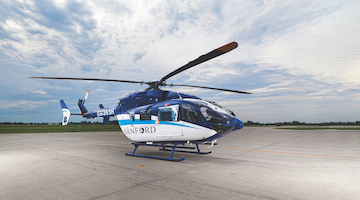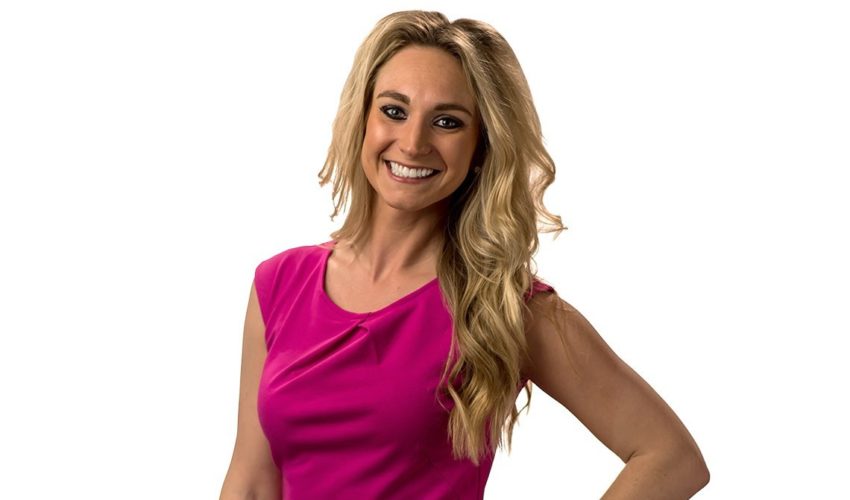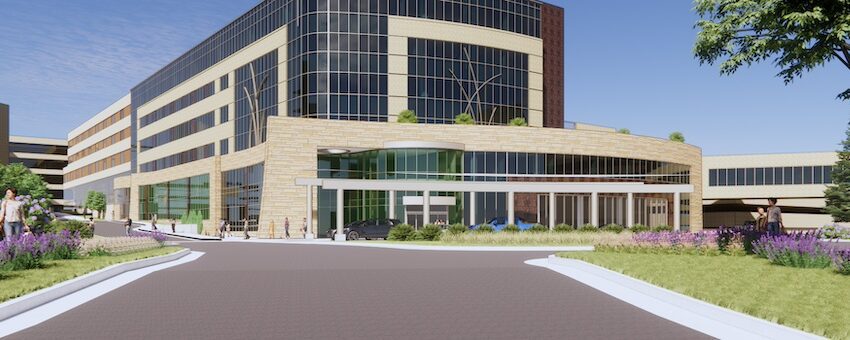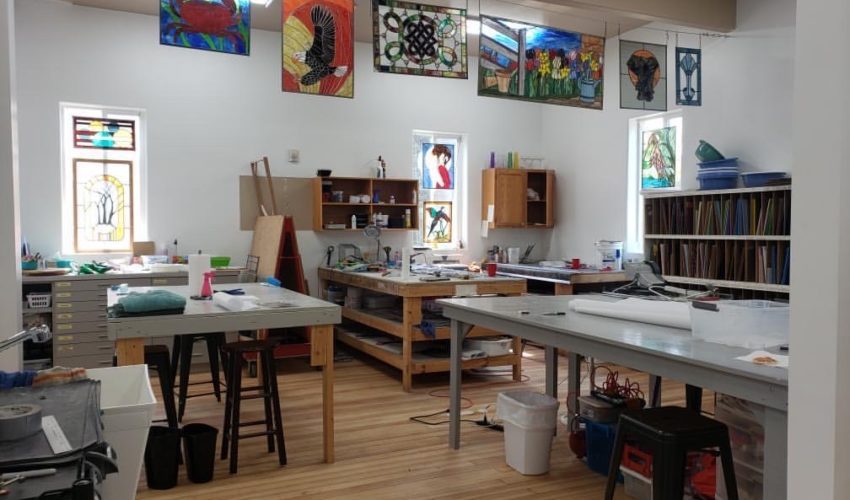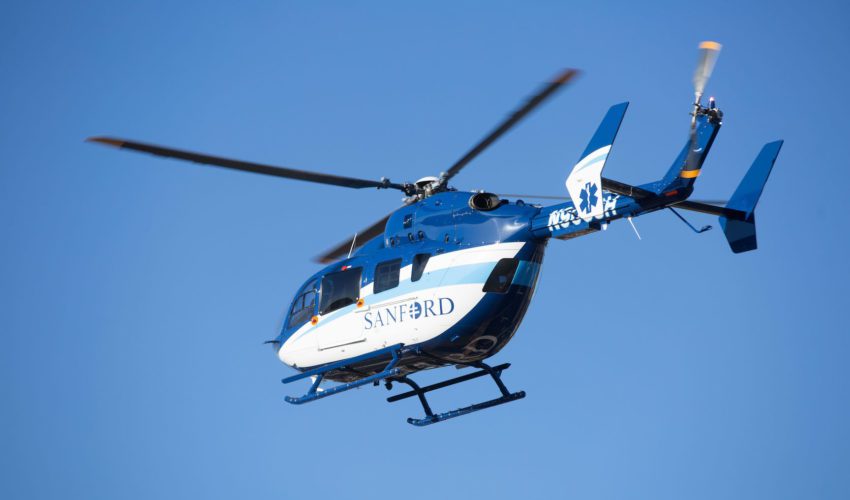Well-trained and equipped, Sanford AirMed flies to save lives
July 7, 2020
This paid piece is sponsored by Sanford Health.
One boat collides with another on a lake. A child stumbles into a campfire on a camping trip. A motorcycle hits a deer after dark.
Even a summer shadowed by the coronavirus is coaxing people to enjoy activities and getaways they love. But when an accident happens in a remote area, an emergency trip to the hospital can get more complicated than an ambulance ride down Sioux Falls streets.
When a life is at stake in a rural area, the people aboard Sanford AirMed are there to help.
Sanford Health’s air ambulance service in Sioux Falls has one helicopter to respond in the region and two airplanes that can fly to either coast or anywhere in between. The service can transfer a variety of patients, including accident victims, moms with high-risk pregnancies, premature babies and ICU patients.
Jon Bohlen served as a flight paramedic for five years and now heads up the clinical side of Sanford AirMed. He oversees training, budgeting and equipment for the five flight teams: adult, maternal, NICU, pediatric and respiratory therapists.
“I make sure that the clinical teams at our Sioux Falls base here have everything they need to take as best care of our sickest patients as possible,” Bohlen said.
Different teams need different types of equipment, including some typically found in an ER or ICU, such as a mechanical ventilator or IV pumps. So every time AirMed’s EC145 flies out, it gets outfitted with equipment appropriate for the patient it will transport.
Typically, a flight includes a critical care paramedic, certified flight registered nurse and the pilot, as well as a respiratory therapist if needed.
While AirMed flies multiple times a day, when teams are not on a call, they add to their education. Bohlen said 100 percent of the adult team of paramedics and nurses have certifications for critical care or flight, which places Sanford AirMed in Sioux Falls in the company of about 100 other programs worldwide achieving that goal.
“We’re pretty proud of that,” Bohlen said. “They work hard.”
Flight crew members may work nights, days or weekends. They also may help out when the Sanford USD Medical Center’s emergency department or other areas get busy. They could start IVs, for example, or perform intubations.
Emergency departments in regional Sanford hospitals are ready to help with health crises as well. And walk-in clinics are an option for issues that don’t warrant an emergency visit but occur at inconvenient times.
But the flight crews are proud to put their training to use when they can fly to the aid of a patient in immediate need.
If a ground ambulance is at the location of a rural accident, that crew, often staffed by volunteer EMTs, can call to request a helicopter.
Cooperative weather is a key component for flights. “It is pretty safe to say our pilots have gotten very good at looking at weather, but it can still change,” Bohlen said.
They must determine what conditions will be like on the way to a site, at the site, on the way back and for landing in Sioux Falls. They take a conservative approach to weather, Bohlen said, for a safe flight and to avoid getting stuck at a site, unable to transport the patient or to take the next emergency call.
In Bohlen’s experience, flights can have “a bit of a season.” In the fall, the crews see more cardiac-related issues arise from hunting season and early snowfalls. In the winter, they see respiratory issues like the flu. And summer is “trauma season.”
From four-wheelers to fireworks to farming, trauma situations keep the flight crews busy. Bohlen worries about the inadvertent effects of COVID-19 too. With public pools closed, will more people visit lakes with no lifeguards? And those avoiding distant travel may do more outdoor activities.
“As you’re outside and having a good time … just be safe,” Bohlen urged. “Wear the helmet, take a second. Have fun, and be safe.”
But if something does happen, know that the Sanford AirMed crews dedicate themselves to doing everything they can to help.
“At the end of the day,” Bohlen said, “you can really say confidently you’ve made a difference in somebody’s life. There’s just no better feeling.”

